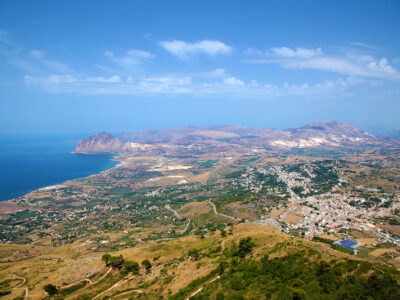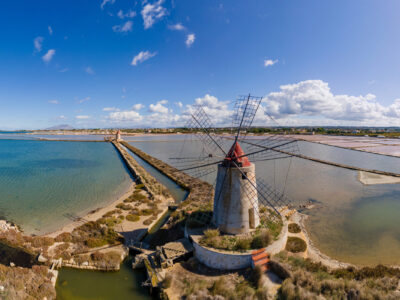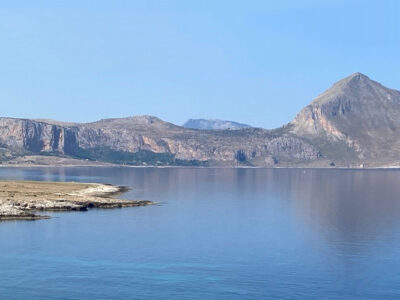The Main Church (Duomo) was built, in the early 13th century (approximately 1314) on a pre-existing chapel dedicated to Vergine Assunta (Our Lady of the Assumption), by Frederic III of Aragon who resided in Erice for a short period, during the Vespers War.
After several restorations, additions and modifications over the centuries, it was radically renovated in the second half of the nineteenth century, assuming its current neo-Gothic appearance, by the Neapolitan architect Dominici between 1852 and 1862. As regards the original construction remain: the plan with three naves, the columns which support ogival arches, the four 16th century chapels.
It preserves the original shapes in the ogival “chiaromontano” style portal with zig zag decorations: the pronaos is an addition of the 15th century, the staircase dates back to 1769 and the rose-window to 1954. Embedded in the external wall, on the southern side, there are nine Greek crosses coming from, according to the tradition, the temple of Venus; on the northern side there is also a portal in Catalan style decorated with diamond-pointed ashlars.
It also preserves valuable sculptures of the 15th and 16th centuries, including a marble statue depicting a Madonna con Bambino (Virgin Mary with Child,15th century) and representing the Madonna of Trapani, attributed to Francesco Laurana, or to Domenico Gagini, and the big marble icon with, at the center, the Enthroned Madonna and Child, dated 1513, attributed to the sculptor Giuliano Mancino from Carrara.
In the left aisle there are three 16th century chapels, connected to each other almost to form a single environment, and now they are used as the seat of the Tesoro della Madrice (Treasure of the Main Church), consisting of liturgical silver objects and including: a reliquary by Pietro Lazzara, a statue of San Antonio Abate (St. Anthony Abbot, 1699) by Pietro Orlando from Trapani, sculptures and paintings from local desecrated churches and monasteries, sacred vestments and paliottis.
Next to the church stands the high bell tower (28 meters), built as a watchtower at the time of the Vespers War, around the end of the 13th century, then transformed into bell tower. It has a square base (8 meters on the side) and it is spread over three floors, each occupied by a hall with a barrel vault. Mono (on the first floor) and bi-hole Gothic “chiaromontano” style windows open on them; it was also used as a prison of the Ecclesiastical Court. A staircase with 113 steps leads up to the top.






















